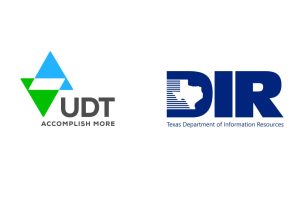Managed IT Services are about more than just break-fix support—they’re a gateway to smarter, more agile operations. Ian Fisher, Solutions Manager at UDT, sat down with us recently to share his insights into how Managed IT Services have evolved into strategic, business-driven IT partners, ensuring seamless operations and long-term growth.
Q&A with Ian Fisher
1. How do you define ‘Managed IT Services’ role in today’s business landscape—and how has it evolved?
“Historically, Managed Services was misunderstood as a way to replace internal IT staff. At UDT, we’ve redefined that perception. Today, Managed IT Services are about augmenting and enhancing internal teams by filling critical skill gaps, providing 24/7 support, and enabling organizations to stay ahead of rapidly changing technological needs. With leaders like George Fernandez, VP of Managed Solutions, we position Managed Services as a strategic partnership that empowers IT teams—not replaces them.”
2. Many companies still view IT as a cost center. How can Managed Services shift that mindset?
“Modern businesses are built on reliable, secure, and scalable IT infrastructure. Managed Services help shift the mindset from IT as a cost center to a growth enabler by removing the burden of day-to-day maintenance. This frees up internal teams to focus on innovation, strategic initiatives, and digital transformation efforts. When IT becomes proactive instead of reactive, it directly contributes to business growth and competitive advantage.”
3. What are the biggest pain points that lead organizations to explore Managed IT Services?
“The most common pain points include overwhelmed IT staff, lack of specialized expertise, and the inability to scale. Internal teams often spend too much time firefighting—handling tickets, patching systems, and managing alerts—instead of focusing on strategic projects. UDT’s Managed Services alleviates that burden, helping IT leaders reallocate resources toward innovation and business goals.”
4. Can you walk us through how UDT helps clients align their IT with broader business goals?
“Every organization has unique goals, and our approach begins by understanding those outcomes. Once we identify the business objectives—such as deploying AI to improve efficiency—we work backward to remove obstacles. For instance, if routine patching is consuming valuable time, we step in with automation and support to offload that work. This alignment allows IT to become a true business enabler.”
5. How do Managed Services support scalability—especially for growing organizations or those undergoing transformation?
“Scalability is often hindered by limited IT capacity and expertise. UDT provides the flexibility to scale resources on demand, support around the clock, and deliver specialized knowledge that growing companies can’t always hire in-house. Our services allow internal teams to focus on transformation initiatives—like automation and cloud adoption—while we handle the foundational support.”
“UDT provides the flexibility to scale resources on demand, support around the clock, and deliver specialized knowledge that growing companies can’t always hire in-house.”
6. What technologies or capabilities do clients often underutilize within a Managed Services relationship?
“Security services are often underleveraged. While we do a solid job educating clients, there’s still a gap in adopting advanced security tools like EDR, MDR, and ITDR, which we can affordably manage with CrowdStrike or Huntress. Our UDTSecure platform provides proactive threat management that many clients don’t realize we can fully manage—freeing them to focus on strategy rather than daily threat triage.”
7. What role does proactive support and monitoring play in business continuity and uptime?
“Proactive monitoring is the backbone of resilience. It prevents downtime, reduces costly surprises, and gives IT leaders the time and clarity to plan for growth. UDT’s proactive approach ensures systems are always running optimally, which directly supports business continuity and allows innovation to thrive.”
8. How does UDT’s Managed IT Services balance standardization with flexibility across different industries?
“We balance standardization and flexibility by building core service frameworks—like patch management, SOC monitoring, and compliance alignment—while tailoring delivery to industry-specific needs. Whether it’s healthcare, education, or finance, we understand regulatory environments and customize our approach to match business priorities and operational realities.”
9. What’s one client story that really illustrates how Managed Services became a business enabler?
“A Health Services provider we work with faced both budgetary and manpower challenges. By providing a scalable, cost-effective help desk solution, UDT enabled them to redirect internal IT resources toward more strategic initiatives—like improving network infrastructure across clinics. That shift helped our client increase operational efficiency and enhance connectivity, ultimately improving patient care.”
10. Looking ahead, what excites you about the future of Managed Services—and what should organizations be preparing for now?
“I’m excited about the integration of AI into Managed Services—AI tools can, for example, automate Level 1 support through intelligent chat. This reduces ticket volume, accelerates resolution, and allows technicians to focus on more complex issues. AI will increasingly handle the ‘have you tried…’ questions, transforming how support is delivered. Organizations should prepare by investing in platforms that blend automation with personalized service, enabling both scale and user satisfaction.”
“I’m excited about the integration of AI into Managed Services—AI tools can, for example, automate Level 1 support through intelligent chat.”
Key Takeaways
- Managed IT Services are no longer just staffing solutions—they’re strategic extensions that empower internal teams with 24/7 support, deep expertise, and gap coverage.
- Shifting IT from cost center to growth enabler requires embracing business-driven IT—letting external partners manage maintenance so internal teams can drive innovation.
- Common challenges like overwhelmed staff and limited scalability are resolved when Managed Services step in with expertise and flexible, on-demand resources.
- Strong IT strategy alignment starts with understanding business goals and working backwards—shifting tactical tasks like patching to free up time for strategic projects.
- Security capabilities like EDR, MDR, and ITDR are often underutilized—Managed Services like UDT Secure can deliver 24/7 threat management.
- Proactive monitoring is essential for business continuity, reducing downtime, and enabling long-term planning and resilience.
- Standardization with flexibility allows Managed Services to operate effectively across industries while meeting unique regulatory demands.
- AI is the next frontier—automating level1 support and ticket triage enables tech teams to focus on high-value innovation and strategic alignment.
By partnering with a trusted provider like UDT, companies can achieve business-driven IT, ensure IT strategy alignment, and unlock the full potential of Managed IT Services to drive innovation, security, and growth. Contact UDT today to discover how we can help your organization create a more streamlined and secure IT environment.











